-
Tetrapod robot developed for investigative, recovery work inside post-accident nuclear plants
Toshiba has developed a tetrapod robot able to carry out investigative and recovery work in locations which are too risky for people to enter; the multiple joints of its legs are controlled by a dedicated movement algorithm which enables the robot to walk on uneven surfaces, avoid obstacles, and climb stairs, securing access into areas which are challenging to be reached by wheeled robots or crawlers
-
-
Y-12 Nuclear Complex’s uranium processing facility to be redesigned
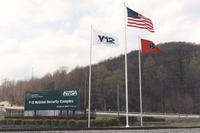
Weeks after the inadequacy of security measures at the Y-12 Nuclear Complex came to light — an 82-year old nun and her two senior citizen colleagues eluded the facility’s fences and security to spend a few hours on the site’s grounds and spray-paint anti-nuclear slogans on its walls – criticism is directed at the design shortcomings of a new uranium processing facility; among other things, the roof of the new facility will have to be raised by thirteen feet because the designers did not take into account the size of the equipment the new facility will house
-
-
Los Alamos lab responds to radiological incident
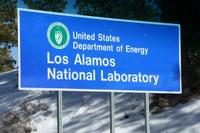
The Los Alamos National Laboratory said it is investigating the inadvertent spread of Technetium 99 by employees and contractors at the Lujan Neutron Scattering Center at the Los Alamos Neutron Science Center (LANSCE), a multidisciplinary accelerator facility used for both civilian and national security research; multiple tests indicate no health risks to public or employees
-
-
Smiths Detection Expands Radiation Offering
Partnership with Mirion enables Smiths Detection to offer customers a fuller range of radiation detection technologies
-
-
Space radiation detection technology to be used for homeland security
Common radioactive sources emit gamma rays while nuclear bomb material emits both gamma rays and neutrons; because neutrons and gamma rays are electrically neutral, it is difficult to ascertain properties such as the direction of origin or energy level of the radioactive source; University of New Hampshire scientists are re-engineering instruments originally built for detecting radiation in space for homeland security purposes
-
-
New international plan to tackle cyber crime, make Internet safer
A new international plan to tackle cyber crime has been launched; the new research roadmap has been developed by leading international cyber security researchers along with industry and government experts, and it aims to help make the Internet of tomorrow a safe and secure platform which is vital for global economic growth and societal development
-
-
Training the nuclear forensics experts of the future
Ten percent of the U.S. experts in nuclear and radiochemistry are at or nearing retirement age, according to a recent report from the National Academies of Science; meanwhile, not enough students are being trained to take their places; undergraduate summer programs in nuclear forensics and nuclear chemistry aim to replenish the ranks
-
-
A third Bell 412 helicopter delivered to NYPD for counterterrorism missions
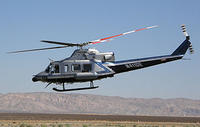
The NYPD dedicated many hours to designing the specifications of the department’s third Bell 412 to meet the diverse needs of the police department; one of the counterterrorism additions to the Bell 412 is a radiation detection system that can identify radiation signatures from an altitude of 200 feet in an effort to protect the city from nuclear bomb threats
-
-
Radiation-resistant circuits from mechanical parts
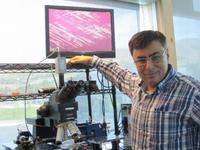
Engineers designed microscopic mechanical devices that withstand intense radiation and heat, so they can be used in circuits for robots and computers exposed to radiation in space, damaged nuclear power plants, or nuclear attack; the devices can also survive work in space
-
-
More effective radiation detection of cargo, baggage
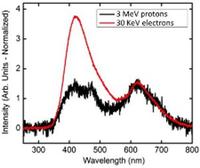
A new technique for radiation detection that could make radiation detection in cargo and baggage more effective and less costly for homeland security inspectors; the novel detection method relies on spectral shape discrimination (SSD), taking advantage of a new class of nanoporous materials known as metal-organic frameworks (MOFs)
-
-
Saab shows new CBRN detection system
Saab introduces a new concept in CBRN detection: a CBRN detection and warning system designed for use by non-specialists in the field
-
-
Nuclear weapon simulations show performance in molecular detail
U.S. researchers are perfecting simulations that show a nuclear weapon’s performance in precise molecular detail, tools that are becoming critical for national defense because international treaties forbid the detonation of nuclear test weapons
-
-
TASC wins three task orders from DNDO
TASC, Inc. was awarded three task orders by DHS to provide its Domestic Nuclear Detection Office (DNDO) with advanced systems engineering and integration and other decision-support services. The task orders are valued at a total of $54 million, including base and option years
-
-
Collaborative effort in developing ionizing radiation, neutron detector
Trojan Defense and Silvaco the other day announced their collaboration in the development of the Trojan Defense Carnyx ionizing radiation and neutron detector
-
-
New patent foreshadows future of trace detection technology
Implant Sciences Corporation has been issued a patent that covers a method for a hyphenated trace detection employing a combination of ion mobility spectrometry, differential mobility spectrometry, and mass spectrometry
-
- All
- Regional
- Water
- Biometrics
- Borders/Immig
- Business
- Cybersecurity
- Detection
- Disasters
- Government
- Infrastructure
- International
- Public health
- Public Safety
- Communication interoperabillity
- Emergency services
- Emergency medical services
- Fire
- First response
- IEDs
- Law Enforcement
- Law Enforcement Technology
- Military technology
- Nonlethal weapons
- Nuclear weapons
- Personal protection equipment
- Police
- Notification /alert systems
- Situational awareness
- Weapons systems
- Sci-Tech
- Sector Reports
- Surveillance
- Transportation
Advertising & Marketing: advertise@newswirepubs.com
Editorial: editor@newswirepubs.com
General: info@newswirepubs.com
2010-2011 © News Wire Publications, LLC News Wire Publications, LLC
220 Old Country Road | Suite 200 | Mineola | New York | 11501
Permissions and Policies
Editorial: editor@newswirepubs.com
General: info@newswirepubs.com
2010-2011 © News Wire Publications, LLC News Wire Publications, LLC
220 Old Country Road | Suite 200 | Mineola | New York | 11501
Permissions and Policies
